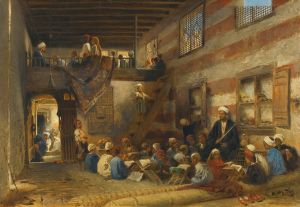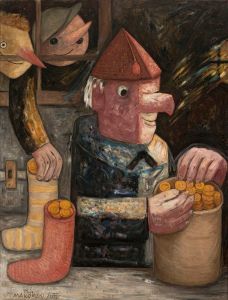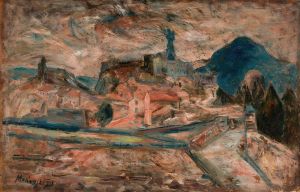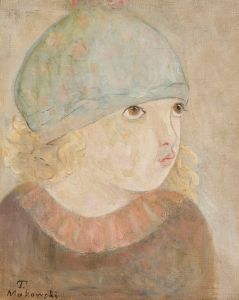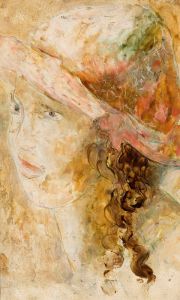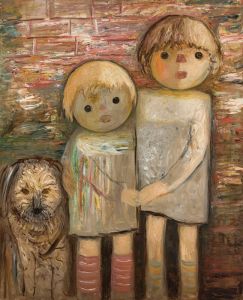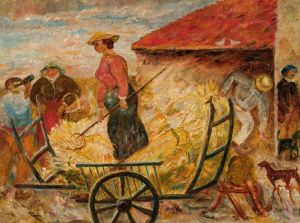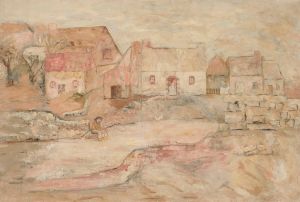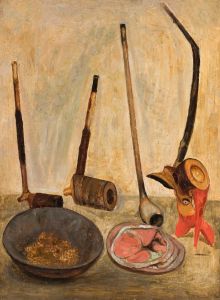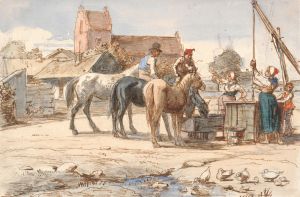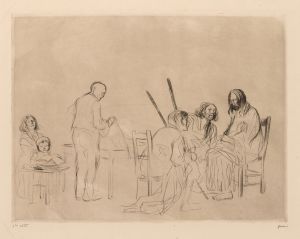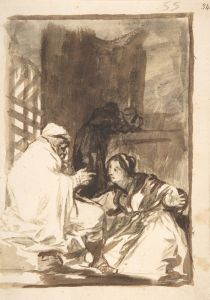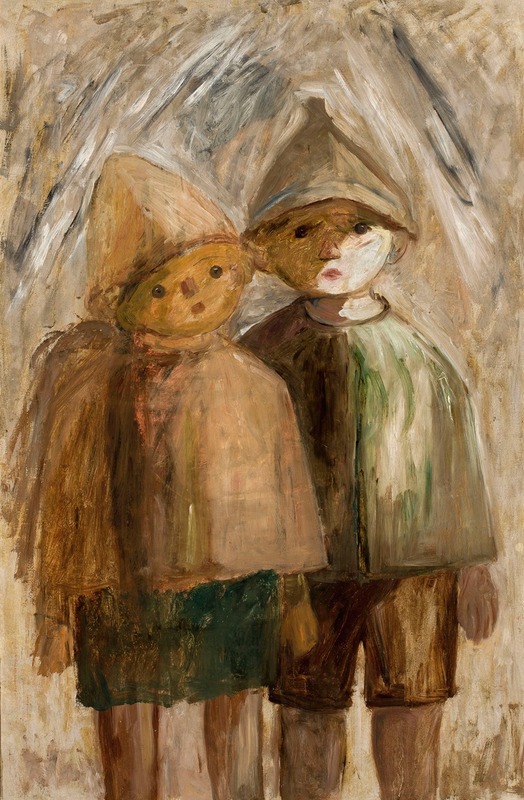
Little pupils
A hand-painted replica of Tadeusz Makowski’s masterpiece Little pupils, meticulously crafted by professional artists to capture the true essence of the original. Each piece is created with museum-quality canvas and rare mineral pigments, carefully painted by experienced artists with delicate brushstrokes and rich, layered colors to perfectly recreate the texture of the original artwork. Unlike machine-printed reproductions, this hand-painted version brings the painting to life, infused with the artist’s emotions and skill in every stroke. Whether for personal collection or home decoration, it instantly elevates the artistic atmosphere of any space.
Tadeusz Makowski was a Polish painter known for his unique style that combined elements of folk art and modernism. One of his notable works is "Little Pupils," which reflects his distinctive approach to art and his interest in capturing the innocence and simplicity of childhood.
Makowski was born on January 29, 1882, in Oświęcim, Poland. He initially studied classical philology at the Jagiellonian University in Kraków before pursuing art at the Academy of Fine Arts in Kraków. His early works were influenced by the Young Poland movement, which was characterized by a focus on symbolism and a departure from realism. However, Makowski's style evolved significantly over time, especially after he moved to Paris in 1908.
In Paris, Makowski was exposed to various avant-garde movements, including Cubism, which had a profound impact on his artistic development. He became associated with other artists in the Montparnasse district, a hub for creative minds during the early 20th century. Despite these influences, Makowski maintained a unique style that often incorporated elements of Polish folk art, which is evident in "Little Pupils."
"Little Pupils" is a painting that exemplifies Makowski's fascination with childhood and his ability to convey emotion and narrative through simple forms and muted colors. The painting typically features children depicted in a stylized manner, often with large heads and simplified facial features, which is characteristic of Makowski's work. This approach allows the viewer to focus on the essence of the subjects rather than getting lost in intricate details.
Makowski's use of color in "Little Pupils" is subtle yet effective, often employing a limited palette to create a harmonious and contemplative atmosphere. The muted tones contribute to the nostalgic and introspective quality of the painting, inviting viewers to reflect on their own childhood experiences.
The composition of "Little Pupils" is carefully arranged to draw attention to the interactions between the children. Makowski often depicted his subjects in group settings, emphasizing their relationships and the social dynamics of childhood. This focus on group interaction is a recurring theme in his work, highlighting the communal aspects of early life and the shared experiences that shape us.
Throughout his career, Makowski remained committed to exploring the themes of innocence and simplicity. His paintings often evoke a sense of nostalgia, capturing the fleeting moments of childhood with tenderness and insight. "Little Pupils" is a testament to his ability to blend modernist techniques with traditional motifs, creating works that are both timeless and deeply personal.
Tadeusz Makowski passed away on November 1, 1932, in Paris, leaving behind a legacy of art that continues to be celebrated for its originality and emotional depth. His work, including "Little Pupils," remains an important part of Polish cultural heritage and is appreciated by art enthusiasts around the world for its unique perspective on the human experience.






